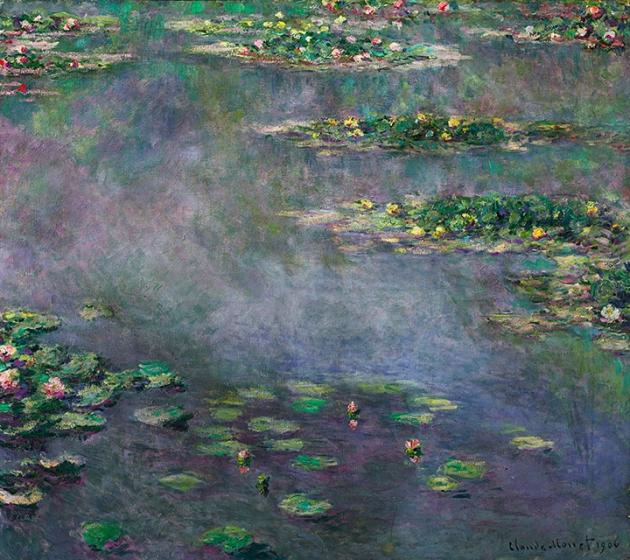Sotheby’s London is offering as a highlight of the Impressionist & Modern Art Evening Sale on Monday 23rd June 2014 Claude Monet’s Nymphéas (Water Lilies) of 1906, estimated at £20-30 million/ $33-50 million. Instantly recognisable and revered the world over, Claude Monet’s Nymphéas are among the most iconic and celebrated paintings of turn of the century. The profound impact the series has made on the evolution of modern art marks them out as Monet’s greatest achievement.
This painting was selected by the artist to be exhibited at his seminal exhibition held at the Galerie Durand- Ruel, Paris, in 1909 to unveil his Water Lily paintings in a show dedicated purely to this subject. It had also been singled out and acquired by Paul Durand-Ruel – the legendary art dealer who championed the Impressionists and represented Monet, among many other of the greatest artists of his time – and it remained in his personal collection throughout his lifetime. The painting has since been widely exhibited at some of the world’s most prestigious international museums, including the Museum of Modern Art, New York, the Musée National d’Art Moderne, Paris, and since 2011 has been on loan to the Museum of Fine Arts, Houston. It is this painting, together with the others in this series, that eventually led to Monet’s Les Grandes décorations which were painted between 1914-26, now in the Musée de l’Orangerie in Paris.
Helena Newman, Sotheby’s Co-Head, Impressionist & Modern Art Worldwide comments: “Impressionism’s greatest genius was Claude Monet and his finest works were the increasingly abstracted paintings he made of his lily pond at Giverny near Paris. Museum-quality paintings of this importance are the driving force in the art market now and this work’s square format and exquisite colouration has already attracted much attention when exhibited internationally in the lead-up to the sale.”
The lasting legacy of Monet’s late work is most clearly seen in the art of the Abstract Expressionists, such as Mark Rothko, whose bold colour planes and rejection of figuration is foreshadowed by the Nymphéas. In recent years Gerhard Richter’s monumental abstract canvases have carried on the tradition established by his artistic forebears. Jean-Dominique Rey, author of Monet’s Water Lilies: A Catalogue Raisonné, commented: ‘Late Monet is a mirror in which the future can be read. The generation that, in about 1950, rediscovered it, also taught us how to see it for ourselves. And it was Monet who allowed us to recognize this generation. Osmosis occurred between them. The old man, mad about colour, drunk with sensation, fighting with time so as to abolish it and place it in the space that sets it free, atomizing it into a sumptuous bouquet and creating a complete film of a ‘beyond painting’, remains of consequential relevance today’.
By 1890, Monet had become financially successful enough to buy the house and large garden at Giverny, which he had rented since 1883. With enormous vigour and determination, he swiftly set about transforming the gardens and creating a large pond. The garden offered a boundless source of inspiration, and provided the major themes that dominated the last three decades of Monet’s career. As Monet explained to a visitor to his studio: ‘It took me some time to understand my water lilies. I planted them purely for pleasure; I grew them with no thought of painting them. A landscape takes more than a day to get under your skin. And then, all at once I had the revelation – how wonderful my pond was – and reached for my palette. I’ve hardly had any other subject since that moment’.

